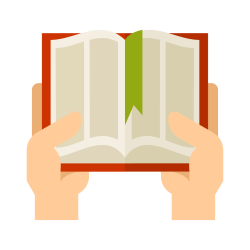
Korean Alphabet Structure
Korean Alphabet Structure
1. When two letters form a syllable
If the vowel is vertical (i.e., ㅓ, ㅏ, ㅣ, ㅐ and ㅔ) following block is used:
In the above example, C stands for consonant and V stands for vowel. Usually, two lettered syllables are made of one consonant and one vowel.
For example: 미, 라 etc.
If the vowel is horizontal (i.e., ㅗ, ㅜ, ㅛ etc.) the following block is used:
Example: 므, 구, 소 etc.
Kindly note that you can use this block to write only vowels too, such that when they are read, they make their original vowel sounds.
For example, 아 (read “aa”), 오 (read “o”), 이 (read “ee”). You should not write vowels in a word ‘alone' like ㅓ, ㅏ, ㅗ etc., they must be preceded by ㅇ i.e. the empty consonant.
2. When 3 letters form a syllable
If the vowel is vertical, the following block is used:
Example: 방, 만 etc.
If the vowel is horizontal, the following block is used:
Example: 통, 은 etc.
Sometimes, we have 1 consonant with 2 vowels, the following block is used:
Example: 외, 늬 etc.
3. When 4 letters form a syllable
If the vowel is vertical, the following block is used:
Example: 앉, 삶 etc.
If the vowel is horizontal, the following block is used:
Example: 긁 etc.
If the vowel is vertical (i.e., ㅓ, ㅏ, ㅣ, ㅐ and ㅔ) following block is used:
| C | V |
In the above example, C stands for consonant and V stands for vowel. Usually, two lettered syllables are made of one consonant and one vowel.
For example: 미, 라 etc.
If the vowel is horizontal (i.e., ㅗ, ㅜ, ㅛ etc.) the following block is used:
| C |
| V |
Example: 므, 구, 소 etc.
Kindly note that you can use this block to write only vowels too, such that when they are read, they make their original vowel sounds.
For example, 아 (read “aa”), 오 (read “o”), 이 (read “ee”). You should not write vowels in a word ‘alone' like ㅓ, ㅏ, ㅗ etc., they must be preceded by ㅇ i.e. the empty consonant.
2. When 3 letters form a syllable
If the vowel is vertical, the following block is used:
| C | V |
| C | |
Example: 방, 만 etc.
If the vowel is horizontal, the following block is used:
| C |
| V |
| C |
Example: 통, 은 etc.
Sometimes, we have 1 consonant with 2 vowels, the following block is used:
| C | V |
| V |
Example: 외, 늬 etc.
3. When 4 letters form a syllable
If the vowel is vertical, the following block is used:
| C | V |
| C | C |
Example: 앉, 삶 etc.
If the vowel is horizontal, the following block is used:
| C | |
| V | |
| C | C |
Example: 긁 etc.